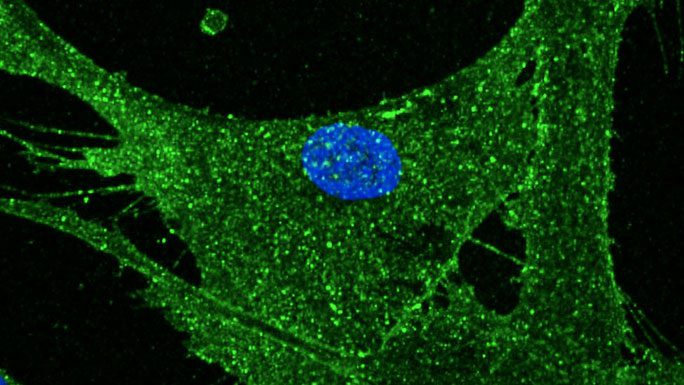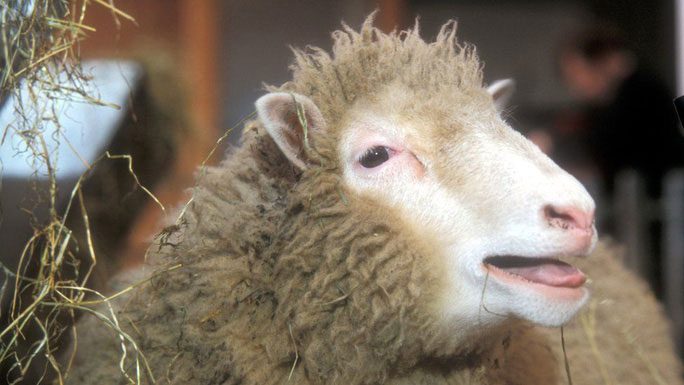Cambridge scientists have successfully reversed the age of skin cells from a 53-year-old woman by 30 years, indicating that they can apply the same technique to other cells in the body thanks to technology related to Dolly the sheep.
This technology is built on techniques used to create the cloned sheep Dolly over 25 years ago.
In an interview with BBC News, Professor Wolf Reik from the Babraham Institute (part of the University of Cambridge, UK), the lead author of the study, expressed hope that this technique could help people remain healthier as they age.

Magnified image of skin cells from a 53-year-old woman, now exhibiting the structure and function of a 23-year-old – (Photo: Babraham)
The origins of this technique date back to the 1990s when researchers at the Roslin Institute (part of the University of Edinburgh, UK) developed a method to convert a mature skin cell taken from a sheep into an embryonic stem cell. This led to the creation of the cloned sheep Dolly.
The goal of the team at the Roslin Institute was not to create cloned sheep or humans, but to use the technique to generate what are known as human embryonic stem cells. They hoped these could be developed into specific tissues, such as muscle, cartilage, and nerve cells, to replace body parts damaged by disease or aging.

The famous sheep Dolly, created 25 years ago – (Photo: Roslin Institute)
The Dolly technique was simplified by Professor Shinya Yamanaka from Kyoto University (Japan) in 2006. The new method, known as IPS, involves adding chemicals to mature cells over about 50 days. This results in genetic changes that transform mature cells into stem cells.
Professor Reik’s team applied the IPS technique to the skin cells of the 53-year-old woman. However, they shortened the chemical treatment time from 50 days to approximately 12. Consequently, these cells did not become stem cells but were rejuvenated enough to resemble skin cells of a 23-year-old.
This technique cannot yet progress to clinical trials as data shows that IPS increases the risk of cancer. However, Professor Reik is confident that once they understand how to rejuvenate cells, they can easily adjust the method to find a safe pathway.
“The aim of the method is to extend youth, not lifespan, so that people can age more healthily,” Professor Reik emphasized.
This technology could help develop rejuvenating drugs for individuals with injuries or burns to accelerate healing, or be applied to other tissues in the body to develop treatments for age-related diseases such as diabetes, cardiovascular issues, and neurological disorders.


















































